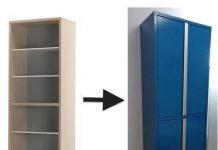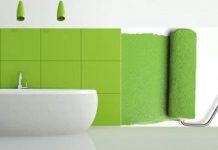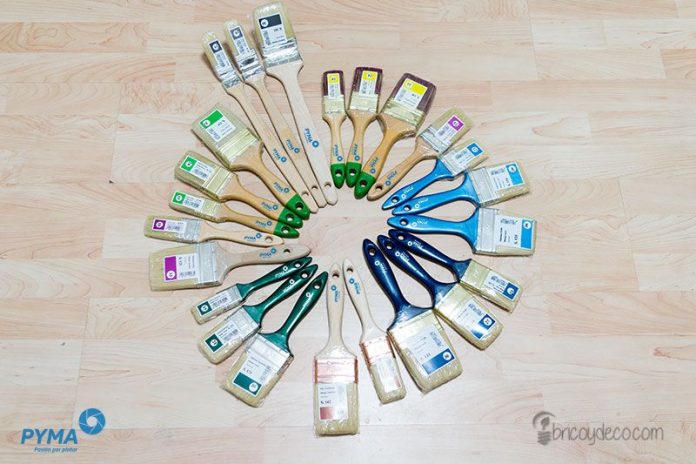
Stirrers, brushes and brushes are essential painting tools when doing any work of this type, whether on furniture, objects or walls. This guide intends that you know them thoroughly and learn to distinguish between the different qualities.
Who has not spent a good time in the brooch section of any surface trying to find out what brush or palette they needed? There is a large number of materials, prices and qualities that makes us doubt which one is best for us.
For this reason, taking advantage of the fact that I recently had the opportunity to visit the plant that manufactures Pyma stirrers, brushes and brushes, I wanted to write this extensive paint tool guide.
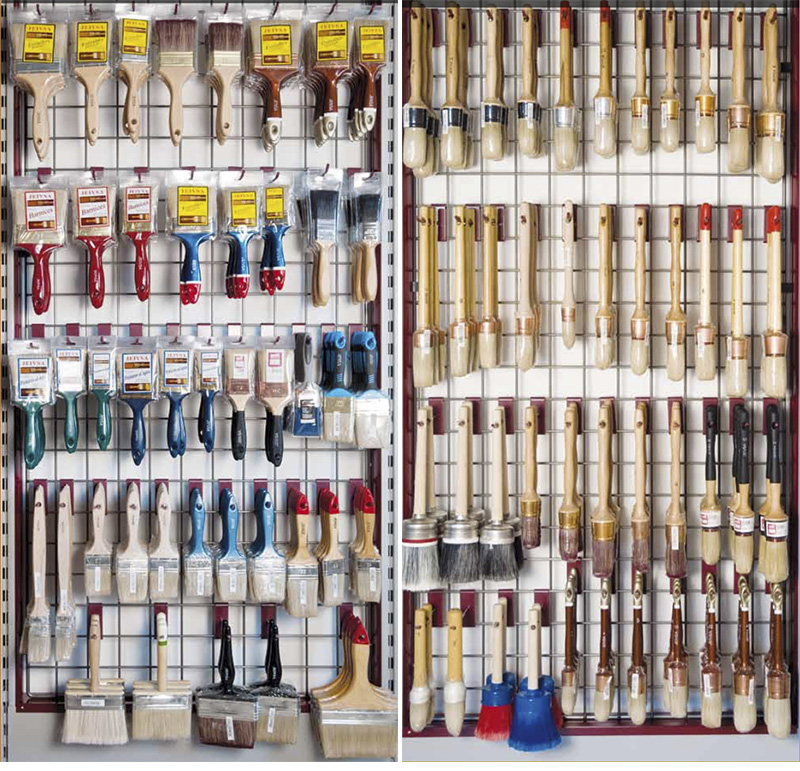
I hope that everything I have learned will help you decide which tool is the most suitable for the job you are going to do and which one has the best quality / price ratio. Personally, it has been very useful when it comes to renovating my dining room table with lasur (you can see it here) and painting the office wall (you can see it here).
Brush, paletina or brush?
There are three fundamental components in every palette, brush or brush:
- Handle, which is where the tool is held. It is usually made of wood or plastic.
- Ferrule, which is the piece of metal that acts as a link between the handle and the bristles.
- Bristles, which is the part that gets wet in the paint.
In addition, there is a fourth element that is not always present but is usually quite common in brushes and stirrers: the wedge. This piece of plastic or wood is located inside the ferrule, surrounded by the bristles.
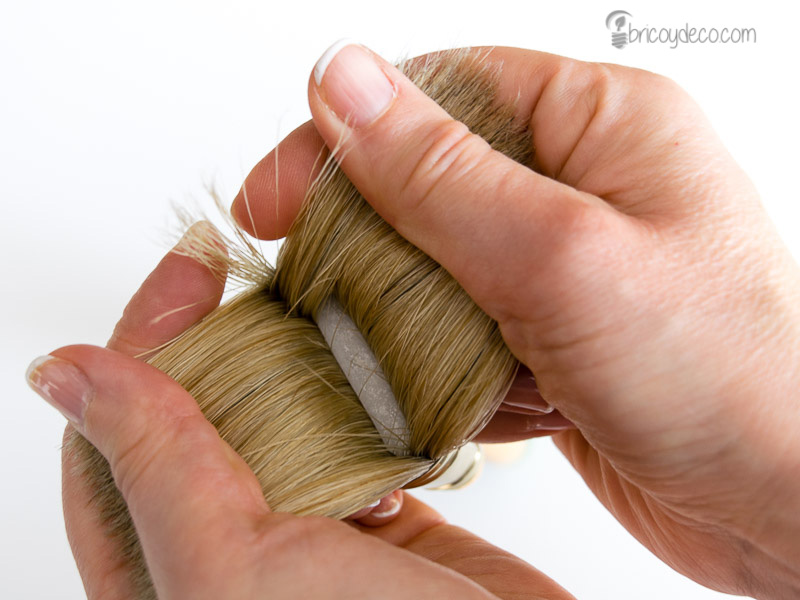
Regarding the classification by its form, the pressed brush is distinguished by being rounded and have long, thick bristles. It is used to paint small objects or narrow and irregular surfaces such as moldings, lathes, etc., as well as to reach angles and corners of flat surfaces (corners of a piece of furniture), and to paint the joint areas of a stay (trim brush with pointed finish).
On the other hand, the can end brush can be flat or rounded and is used for touch-ups, such as reviewing small imperfections or painting elements with great detail. It has a format similar to that of the brush but it is much finer and its bristles form a compact block.
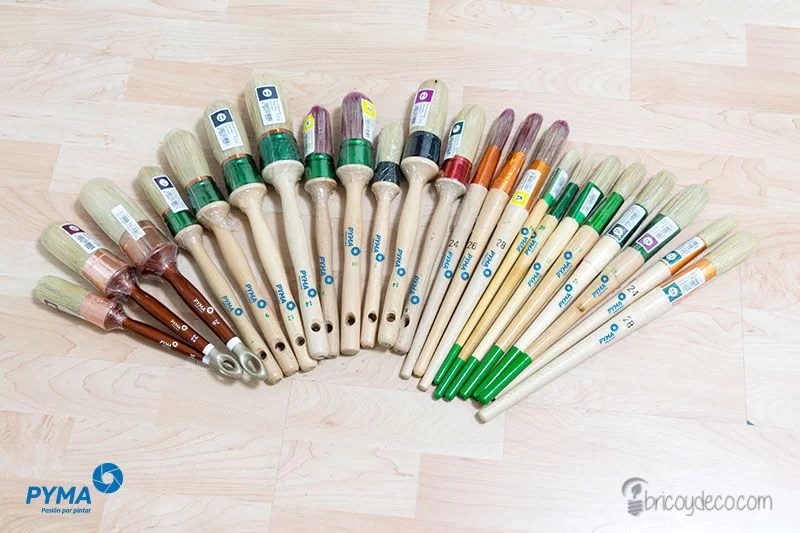
The blades are flat and its bristles are arranged in a rectangular shape. They distribute the paint better than brushes, for this reason they are the most suitable for covering large smooth surfaces such as table tops, cabinets or bookcases.
There are different types of stirrers depending on the work to be done, such as:
- Angular trowel, ideal for profiling.
- Paletinas to achieve decorative effects.
- Radiator brush, whose shape is adapted to be able to paint behind the radiator.
- Paletinacanaria, wide and thick format to paint on walls and ceilings.
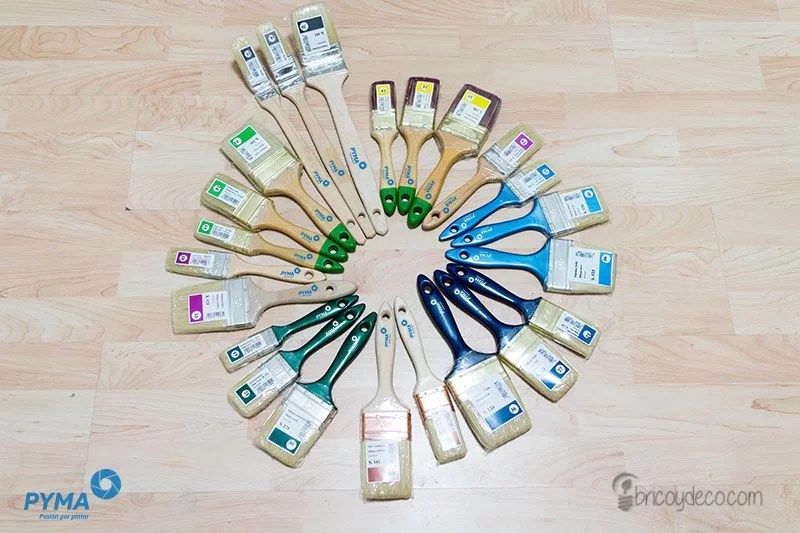
The most common is that these three types of tools are combined to paint in our work, since in this way a better finish is achieved.
Regarding size, both the length of the bristle and its width and thickness must be taken into account, since the larger it is, the more covering capacity it will have. In the case of brushes, the size is measured by the diameter of the ferrule and in the case of brushes by the width and thickness. According to this classification, you can find double, triple and quadruple stirrers, depending on the rows of bristles it contains.
bristle types
The bristle or hair is the fundamental part of a brush, paletina or brush since it is the vehicle that transports the paint. The final result will largely depend on it, although the skill and ability of the painter is also an important factor.
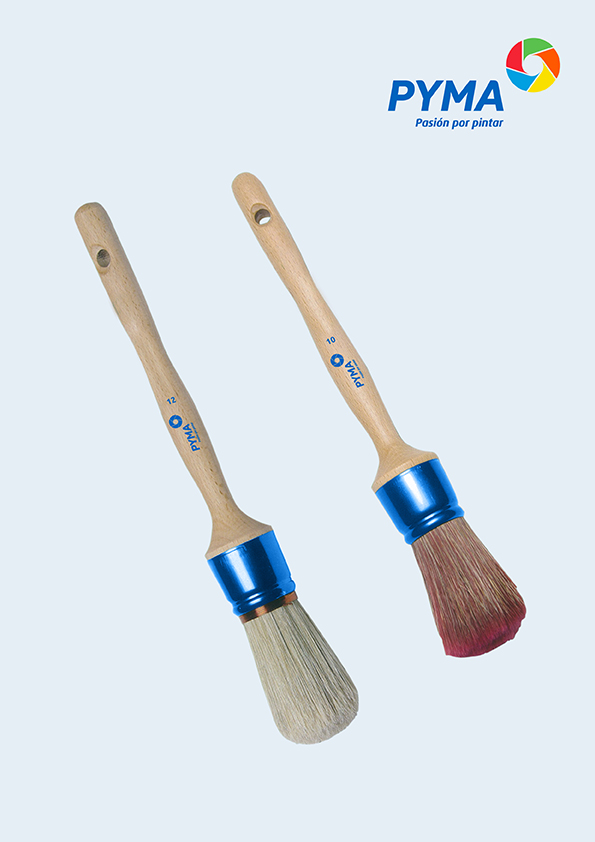
There are two types of bristles: natural and synthetic, each of them is subdivided according to the quality or material with which it has been manufactured. In the market you can find both one type or another, such as those that mix natural and synthetic bristles, as well as different types of fibers in the case of synthetic ones.
Natural bristle painting tools
The natural bristle is obtained from the back of pigs and wild boars. This type of hair is usually thick, highly resistant and elastic, and is also characterized by having an “open” tip since it is normally divided into several parts (as if it were a hairpin). The more open the tip, the better quality the bristle will be as it will facilitate the distribution of the paint.
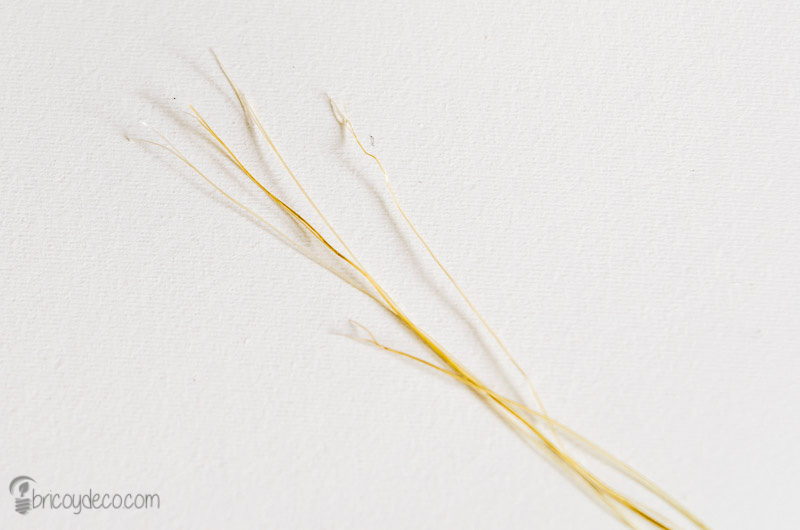
Within the natural bristle there are different qualities. The Chinese white bristle is the cheapest, although the bristle from the regions of Chungking, Hankow, Shanghai and Yunan is of very good quality because, due to weather conditions, the hair is thicker and has a greater capacity for paint absorption.
On the other hand, it must be taken into account that being natural hair it is practically impossible for all of them to have the same length. For this reason, different lengths are often combined in a brush, the longest bristles being called “tops”.
synthetic painting tools
Synthetic bristles are used for the application of water-based paints, since they have a lower resistance to the acidity of ketones or solvents. Most commonly they are made with nylon and polyester.
The nylon filaments they have a greater absorption but instead are less resistant to solvents. On the other hand, there are two qualities of polyester filaments:
- PET: more resistant to solvents but with less absorption power
- PBT: with less resistance to solvents but with greater absorption power
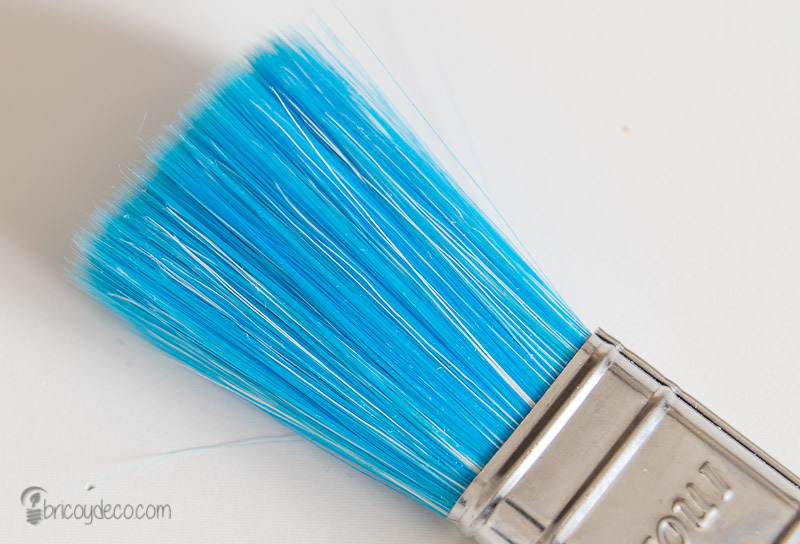
Apart from its resistance to solvents, the synthetic fiber differs from the natural one in that it is much more sensitive to high temperatures, being able to become deformed. For this reason, synthetic bristles should not be cleaned with hot water or painted with them when the temperature is high (for example in summer when the incidence of the sun is direct).
How to distinguish the natural bristle from the synthetic fiber?
There are a number of factors that will help us distinguish whether a bristle is natural or synthetic:
- For the color. Natural bristle is usually white, beige, brown or black, while synthetic bristle can have strong colors that are not associated with any animal (for example blue).
- For the shine. Synthetic bristle is shinier than natural bristle.
- By touch. The natural bristle is softer than the synthetic bristle, which is more rigid. When the hairs are moved from one side to the other, the natural bristle ones take longer to return to their initial shape while the synthetic fiber ones return immediately.
- By the sound. Unlike natural bristles, synthetic bristles produce sound when dragged between the fingers.
- Because of the length of the bristle, since in a natural bristle brush/palette you can distinguish different bristle lengths, while in a synthetic hair brush they are all the same.
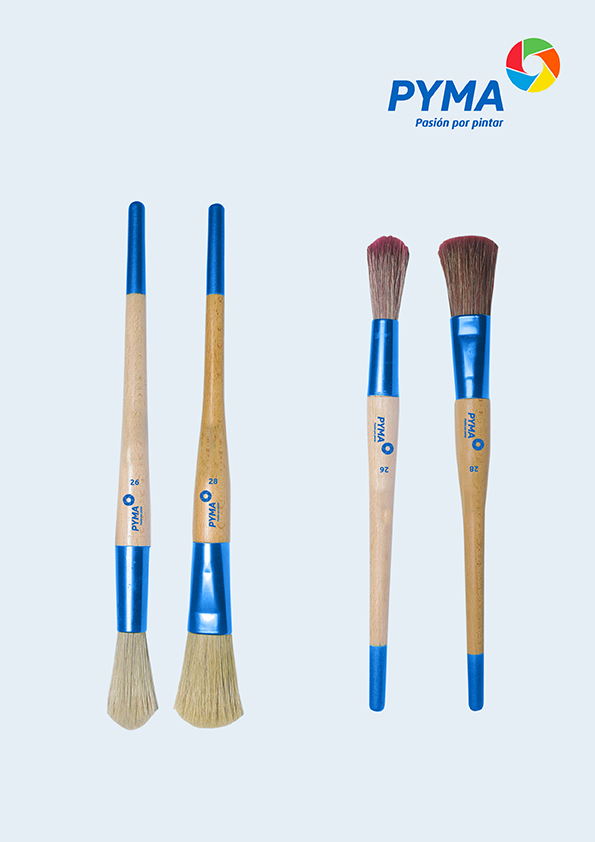
On the other hand, it must be taken into account that there are quality synthetic bristles that imitate the natural bristle in detail, both in color and the difference in length and even the fork of the tip.
Natural bristles vs synthetic bristles
One bristle or another is usually recommended based on the type of paint to be used: natural bristle for solvent-based paints and synthetic bristles for water-based paints. This is due to the fact that natural hair softens with water-based paints due to its retention capacity, while synthetic bristles remain firmer. On the other hand, the natural bristle better distributes the oils in solvent-based paints and varnishes.
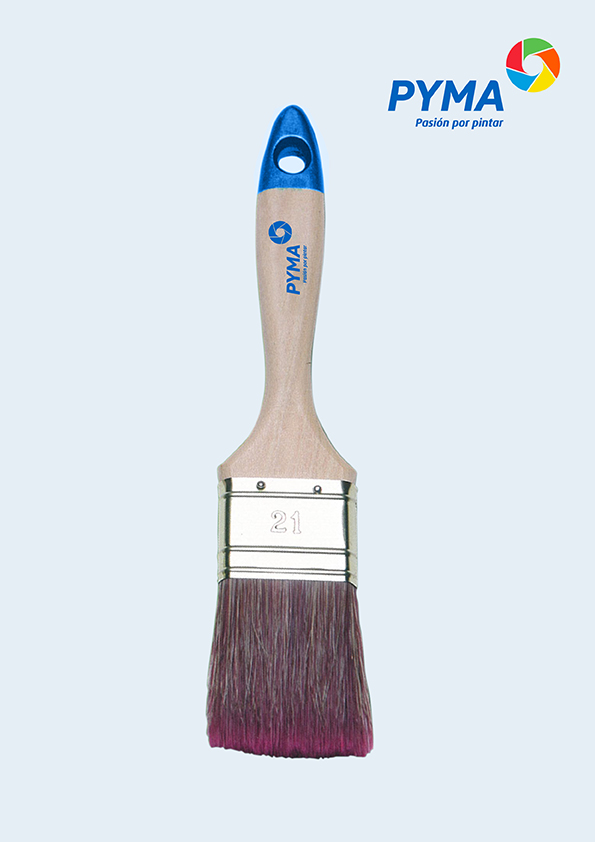
However, other factors should be taken into account depending on the characteristics of the filaments. In the case of the natural bristle, the stem is made up of three layers (you can find more information about it on Wikipedia):
- The medulla, which is made up of a hollow tube present only in the thickest hairs.
- The cortex, which surrounds the medulla.
- The cuticle, which is the outer covering made up of scales.
The scales of the natural bristle retain more moisture and the medulla absorbs more liquid than the synthetic bristle filaments, which means that always will store more paint. For this reason, with a natural bristle brush or trowel, painting works are carried out more quickly, since with fewer passes a larger surface is covered.
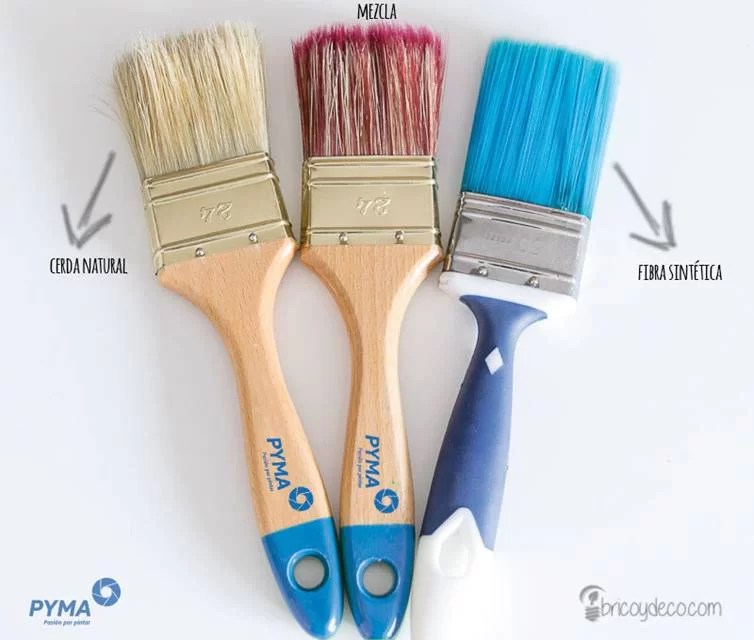
On the other hand, the natural bristle distributes the paint differently to synthetic bristle. With the first, the paint is better dosed, spreading evenly, while with the synthetic bristle, most of the paint load is deposited in the initial brushstroke.
In terms of resistance, the natural bristle withstands heat and solvents better than the synthetic fiber but offers less resistance when painting a rough surface. When cleaning them, those made of synthetic bristle are easily and quickly cleaned, in fact it is recommended to clean the natural bristle with solvent even if a water-based paint has been used since, due to its ultra-absorbent capacity, it is the best way to completely remove paint with less effort and less water.
In short, when choosing the type of bristle, not only the composition of the paint must be taken into account, but also other factors such as the type of surface on which it is going to be applied, its extension and the ambient temperature.
How to distinguish between a poor quality painting tool and a good quality one?
Of course the price is very important when it comes to distinguishing a tool of good or poor quality. A very low price is usually indicative of low quality but it is not necessary to buy the most expensive brush or brush to obtain good quality.
In the next video I give you all the keys to know what factors are the most important when choosing a quality brush or trowel.
How to keep brushes, brushes and brushes in perfect condition
Lastly, when it comes to keeping brushes, brushes and brushes in perfect condition and prolonging their useful life, it is convenient to follow a series of recommendations:
- While you are working with them, keep them moist to prevent the paint from drying between the hairs.
- When we clean them in the first place, the excess paint will be removed with an absorbent wipe.
- If a water-based paint has been used on a natural bristle, it will be cleaned with warm water and soap, finishing with a little solvent until it is completely clean.
- If a water-based paint has been used on a synthetic bristle, it will be cleaned with cold water and soap, avoiding twisting the filaments.
- In the case of synthetic paints, it is recommended not to leave the brushes soaking for a long time to avoid damaging the fibers, especially if they are synthetic.
- Eliminate excess moisture with absorbent paper and let air dry horizontally on paper and never with the bristles upwards as in the following image.
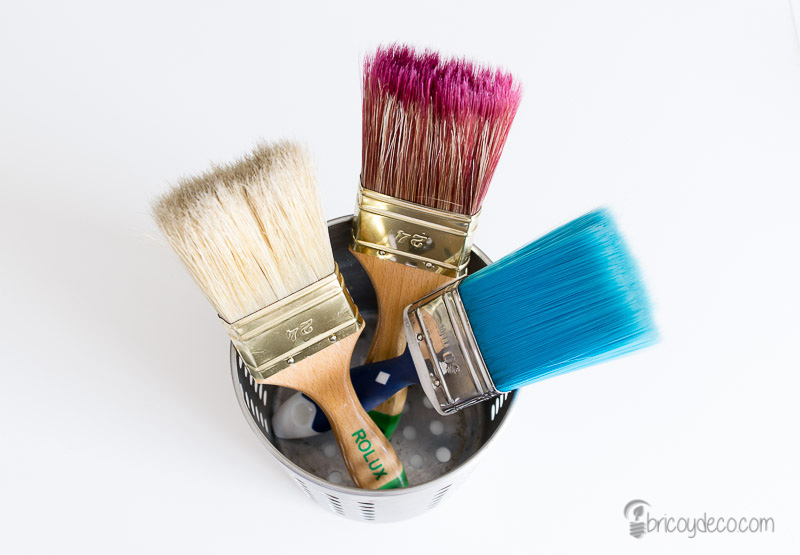
Summarizing…
At this point in the post you may be saturated with so much information, for this reason I wanted to summarize the fundamentals in an infographic. You already know that “an image is worth a thousand words”, or two thousand which are the ones I have almost written 🙂
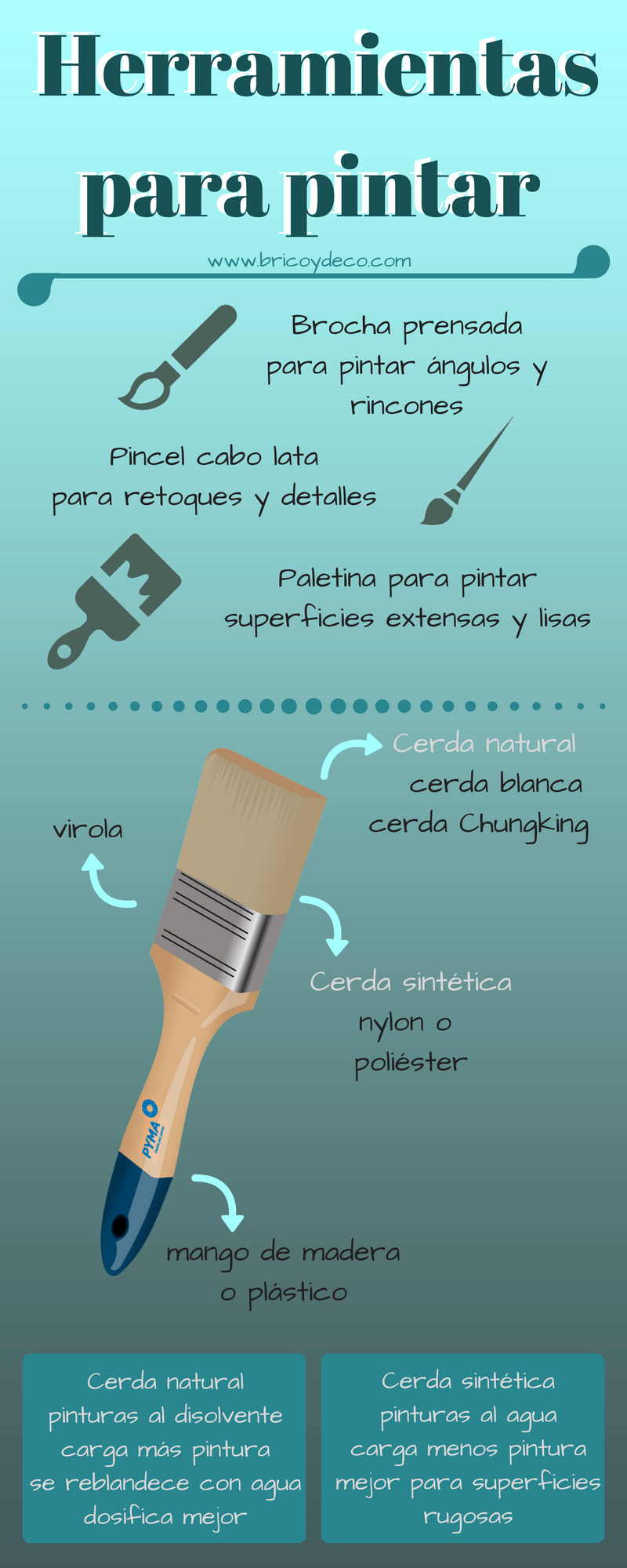
what did you think of this paint tool guide? I hope it has helped you to better understand the brushes, brushes and paintbrushes and to know which one is the most appropriate depending on the painting work you are going to do. I also trust that it will help you to distinguish the tool with a better value for money.
If you liked this post you can find more guides and DIY projects at Thank you very much for commenting and sharing!

